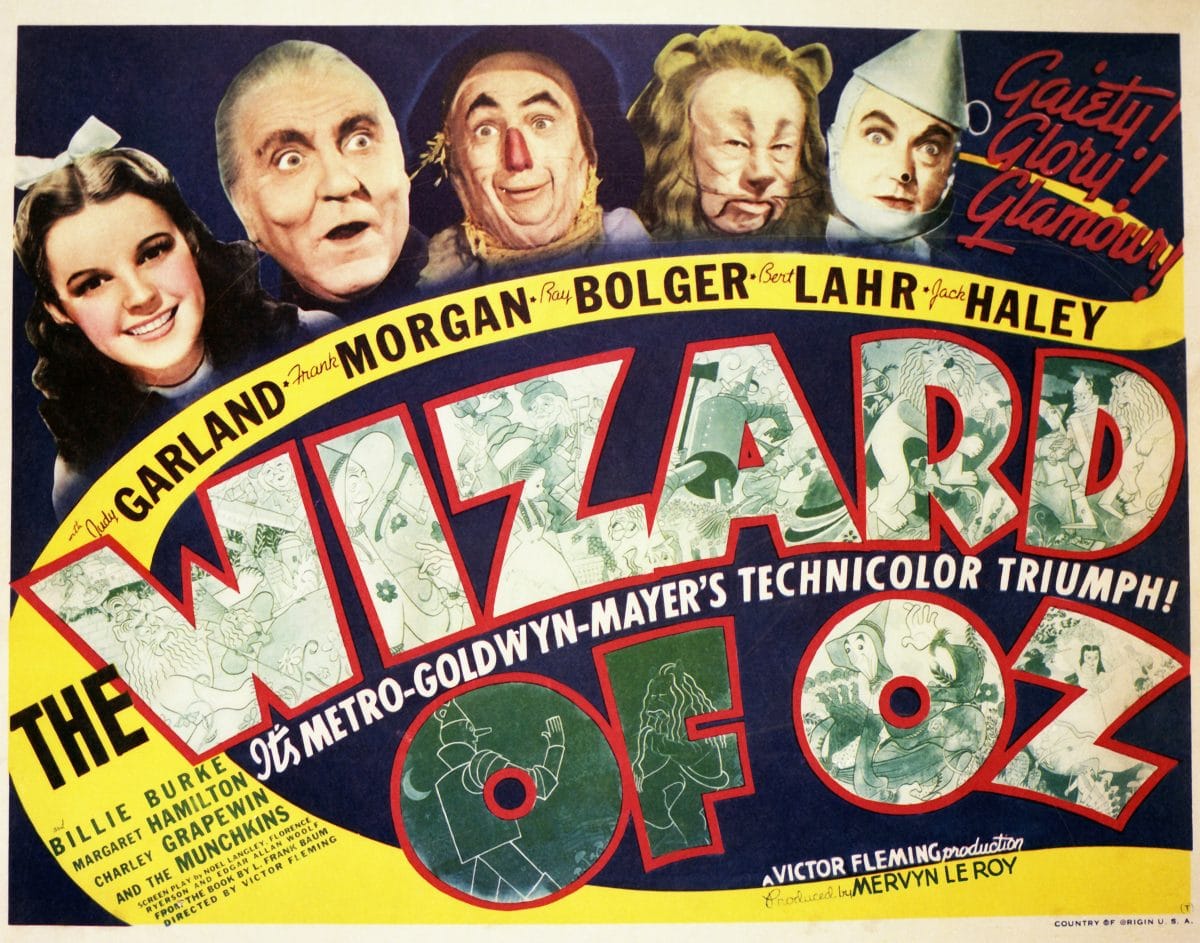 Screenplay by: Noel Langley & Florence Ryerson and Edgar Allan Woolf
Screenplay by: Noel Langley & Florence Ryerson and Edgar Allan Woolf
Adapted by Noel Langley from the book by L. Frank Baum
Lyrics by: E.Y. Harburg Music by: Harold Arlen
Directed by: Victor Fleming
Genre: Golden Fleece
Opening Image: Dorothy Gale (Judy Garland) and her dog Toto hurry down a rural Kansas road, running away from a problem.
Set-Up: Dorothy tells her aunt and uncle that the neighbor, Miss Gulch (Margaret Hamilton), hit Toto with a rake for trespassing in her garden. Dorothy’s adoptive guardians have no time for her, however, as they prepare their farm for an oncoming storm. The three farmhands, foreshadowing their roles in the later part of the story, also fail to offer any real help. Dorothy’s A Story problem of protecting Toto, combined with the lack of support from those around her, show the six things that need fixing in her life. Auntie Em tells Dorothy that they only want her to find a place where there is no trouble.

Theme Stated: Speculating on such a place, one that must be far away, she sings:
Somewhere over the rainbow way up high
There’s a land that I heard of once in a lullaby
Somewhere over the rainbow skies are blue
And the dreams that you dare to dream really do come trueSomeday I’ll wish upon a star
And wake up where the clouds are far
Behind me
Where troubles melt like lemon drops
Away above the chimney tops
That’s where you’ll find meSomewhere over the rainbow bluebirds fly
Birds fly over the rainbow.
Why then, oh, why can’t I?
The song reveals the thematic premise: is there another place, one in which Dorothy will feel at home? Is it possible that there is somewhere she will feel safe? Technicolor aside, is the grass really “greener on the other side?” This is what Dorothy will need to learn on her journey.
Set-Up (Continued): Miss Gulch arrives with an order to take Toto and have him destroyed for biting her. When Toto escapes her clutches and returns home, Dorothy decides the two should run away. In her thesis world, staying at the farm means Stasis = Death, both literally for Toto and symbolically for Dorothy. On her way, she meets Professor Marvel (Frank Morgan), who portends to tell fortunes. Consulting his crystal, he convinces Dorothy to return home to her aunt and uncle; she can’t always run from her problems, and must eventually confront them.
Catalyst: Arriving back at the farm, Dorothy is caught in the middle of a storm while searching for her family and the farmhands. As a tornado rages, she is struck in the head and knocked unconscious.
Debate: The house crashes to the ground, and Dorothy opens the door to reveal a world totally unlike hers, an upside-down version of all she knows, vibrant and exciting. She tells Toto, “I have a feeling we’re not in Kansas anymore.” But where are they? Dorothy believes they’ve made it “over the rainbow,” where she will find happiness. She is greeted by Glinda (Billie Burke), a good witch who declares Dorothy a heroine to the citizens of Munchkinland; her house has killed the Wicked Witch of the East.
The Wicked Witch of the West arrives, accusing Dorothy of murder, and Glinda gives Dorothy the Witch’s magical ruby slippers. She is told to get out of Oz; it is not the safe place she had assumed. The only person who might be able to help her return to Kansas is the Wizard in Emerald City.
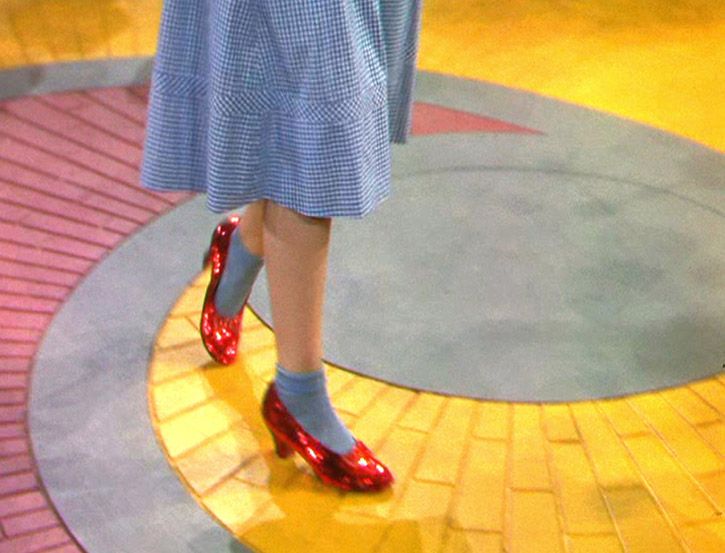
Break into Two: Dorothy, guided by the Munchkins, begins her journey down the yellow brick road (a literal road in this Golden Fleece) and enters her antithesis world, one that is not as safe as her home was.
B Story: The B Story characters will be those Dorothy meets along the way, reflections of family and friends that help her understand the theme and learn that she has a home where she is loved.
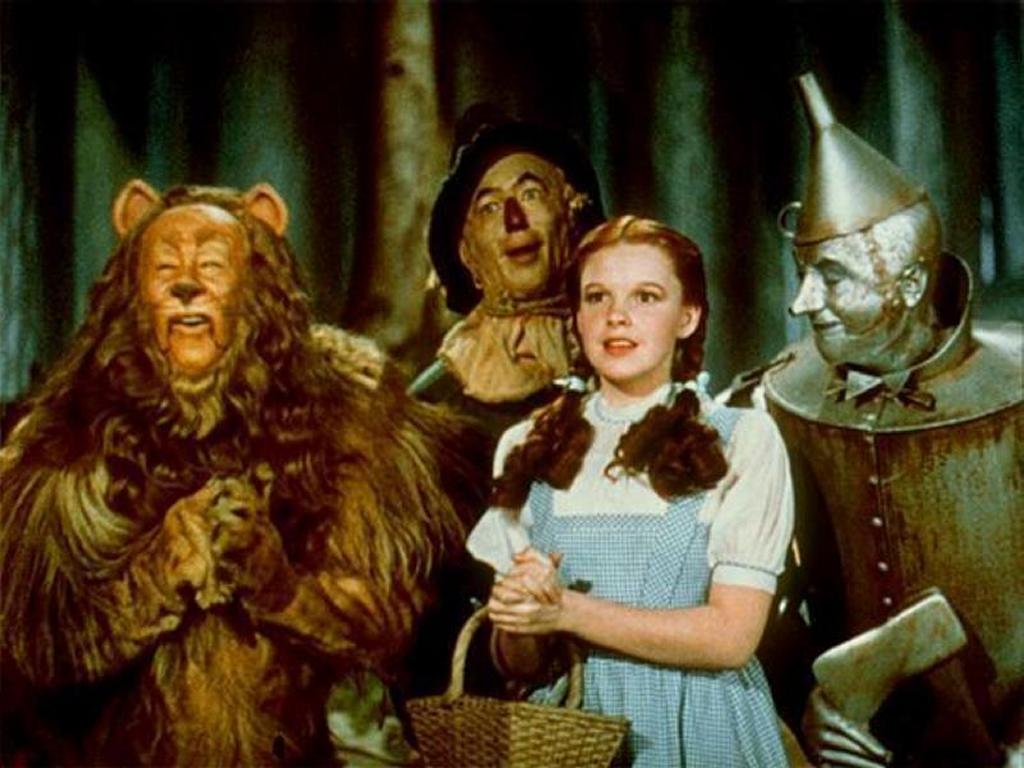
Fun and Games: As Dorothy travels down the road, she begins to assemble her team. First, she meets the Scarecrow (Ray Bolger) who is unable to scare anything, believing this is because he has no brains. Dorothy invites him to meet the Wizard with her. Farther along, they meet the Tin Man (Jack Haley), who desires a heart to display emotion and feel like a person.
After the Wicked Witch arrives to challenge them, they encounter the Cowardly Lion (Burt Lahr). The four continue toward the Emerald City, confident that they will find what they want… but will it be what they need? Meanwhile, the Wicked Witch casts a spell on a field of poppies to lull them to sleep.
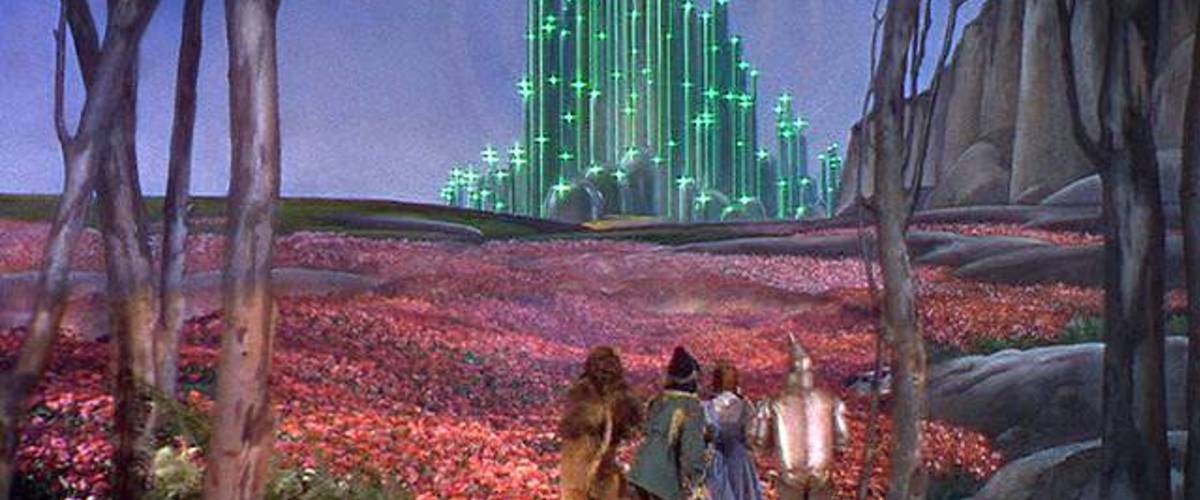
Midpoint: With the Emerald City in sight, the team runs through the poppy field, but Dorothy begins to succumb to the spell. When Glinda causes snow to fall on the field, the spell begins to break, and Dorothy rises to complete the journey. It’s a false victory as they arrive at the gates, accompanied by a hope-infused song:
You’re out of the woods, you’re out of the dark, you’re out of the night
Step into the sun, step into the light
Keep straight ahead for the most glorious place on the face of the earth or the sky
Hold onto your breath, hold onto your heart, hold onto your hope
March up to that gate and bid it open
After the guard sees Dorothy’s slippers, he grants them admittance, and they are primped and cleaned up to meet the Wizard, a public coming out and a party at the Midpoint.
Bad Guys Close In: The celebration doesn’t last long, as the Wicked Witch flies over the city and writes an ominous warning to Dorothy in the sky. Panic sweeps through the city, and Dorothy and the team approach the Wizard to speak with him, their internal Bad Guys of self-doubt hindering them. The Wizard is terrifying to behold, his visage accompanied by a booming voice and bursting flames. After berating each member of the team, he throws a road apple at them: complete the impossible task of bringing back the Witch’s broomstick — only then will he help them.
The stakes are raised and timeclocks begin ticking as Dorothy’s ability to return to Kansas becomes more unlikely. Passing through the haunted forest, the team is attacked by the Witch’s flying monkeys, and Dorothy and Toto are brought before the Wicked Witch. Reflecting the predicament Dorothy was in at the start of the story, she must save Toto from destruction, this time by giving the Witch the ruby slippers. She agrees, but a spell makes it impossible to remove them as long as Dorothy is alive. Toto escapes, but the Wicked Witch plans to kill Dorothy as soon as the sand in the hourglass has fallen.
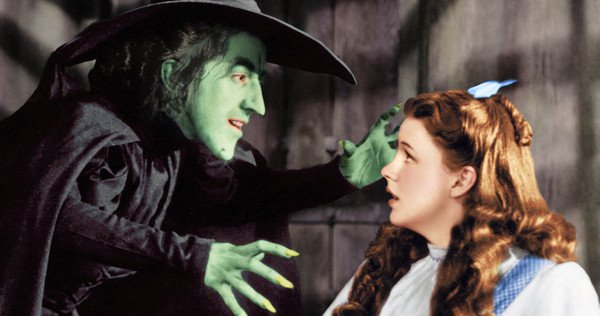
All Is Lost: Dorothy despairs; the whiff of death is imminent for her and her friends. Relying on her primal instincts, she calls out to her aunt, “I’m frightened, Auntie Em!” She is worse off than if she had never run away from home in search of something better.
Dark Night of the Soul: During her lament, Dorothy sees a vision of her Auntie Em in the Witch’s crystal ball and says that she’s trying to get home. She now knows that home is Kansas, and that is where she belongs, not in a faraway land “over the rainbow.” Meanwhile, the Scarecrow, Tin Man, and Cowardly Lion hatch a plan to save Dorothy.
Break into Three: While Dorothy awaits rescue, the three friends plan to Storm the Castle.
Finale: In their synthesis world, the team demonstrates their transformation. Dorothy wants to go home, while the rest of the team gathers and reveal that they already possess what they desire: the Scarecrow strategizes, the Tim Man shows emotion, and the Cowardly Lion is willing to lead and execute the plan of dressing like guards to sneak in. When the Witch stops them and tries to kill the Scarecrow with fire, Dorothy douses him, splashing and killing her in the process.
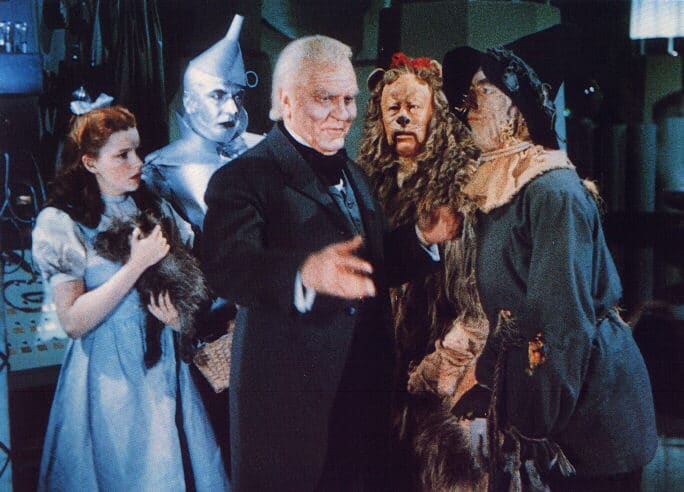
They now have the broomstick and return to the Wizard. In a high tower surprise, the Wizard is exposed to be a charlatan. He gives each individual a prize to symbolize that they already had what they wanted — what they needed was to recognize it. However, his plan to help Dorothy return to Kansas fails and leaves her stranded in Oz. Glinda appears, telling Dorothy she always had the power to return; she only needed to learn it for herself. Dorothy digs, deep down and executes the new plan, clicking her heels together.
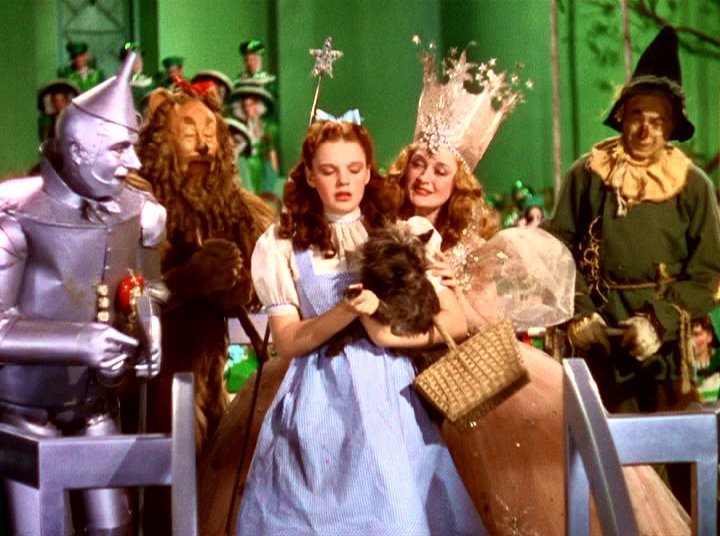
Final Image: Dorothy wakes, surrounded by her loved ones, promising she will never leave those who love her. Her journey has ended where it has started, and her prize is the realization that “there’s no place like home.”
Cory Milles
4 Comments
Leave a Reply Cancel reply
You must be logged in to post a comment.


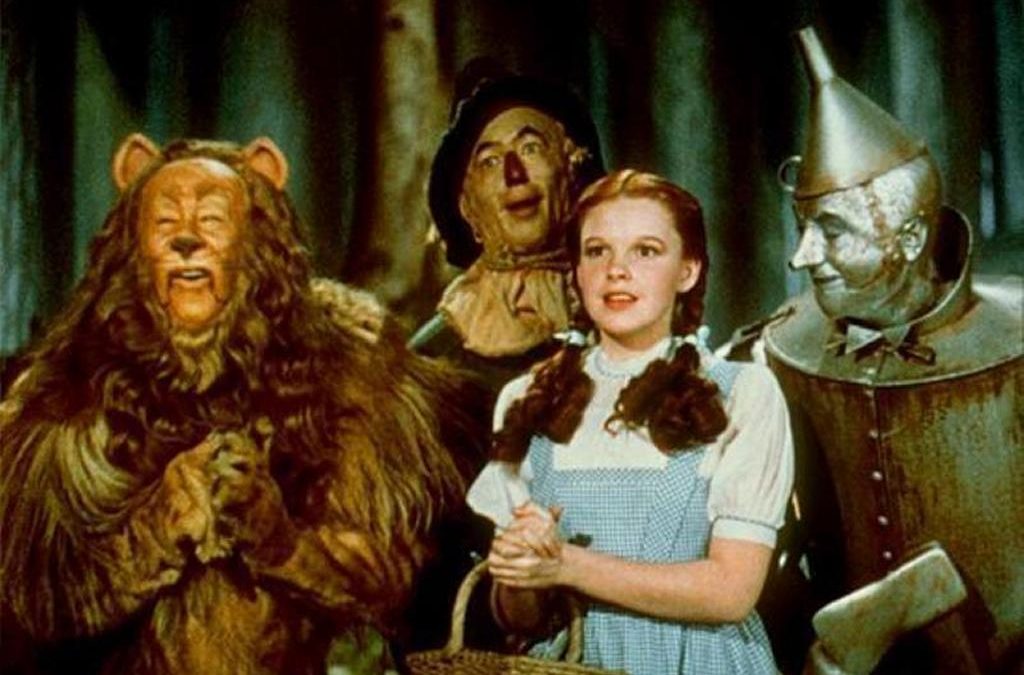
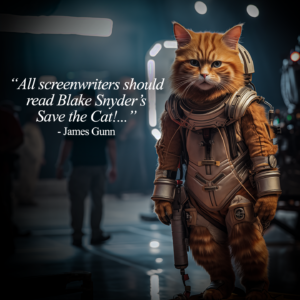

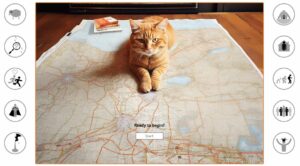




Great work, Cory. Loved your analysis and loved your screenshots. This is one of your best — though there are so many to choose from!
I’ve loved this movie since I was a kid when I started watching it on television every Fall, but fell more deeply in love with it when I saw a restored print projected on the big screen. The artfulness on display at every level, from make-up, costuming, production design — all photographed in glorious technicolor (all but the Kansas bookends) is the Hollywood studio system at its peak. But one thing has always bothered me about it, at least once I became cognizant of the nuances and building blocks of “story.” It’s the lesson: the lesson learned here seems kind of half-baked, and vague. “There’s no place like home.” Huh. In the book, Dorothy is much younger — she’s 9 or 10. So that lesson is developmentally appropriate, I guess. But the movie depicts an older Dorothy, and even though Judy Garland does an exceptional job of projecting youth, innocence and vulnerability, I think because she’s older we expect her to demonstrate greater growth and a more forceful lesson. Of course, they didn’t want to depart too much from the source material (which had its own following), and they were already concerned with issues of length (they cut an entire musical number because of it). But thinking about it now, I wonder if it would be better to give Dorothy a climactic scene with Mrs. Gulch back in Kansas where she shows that she has moved beyond running away from her problems (the Opening Image here) and instead confronts them squarely, with grace and maturity. She could put Mrs. Gulch in her place somehow, and Mrs. Gulch gets her comeuppance — all displayed in front of her family and friends who earn new respect for her. You don’t want to mess up the elegant “curtain call effect” that the film currently has, expressed so skillfully and efficiently, but I’m reminded that in the first Back to the Future film shows how things have changed for the better between Marty’s Dad and his Nemesis, Biff. It’s an interesting problem to consider from an STC perspective — can we improve upon a classic? I’m not sure if we can. Anyway, great breakdown of a great film.
Excellent best sheet.
I do have a question: why do you break in three instead of classic storm the castle? What is the significance?
Tom, thanks for the comments! I agree with you… today, we’d want to see Dorothy put her lesson into a more direct action related to her thesis world and confront Gulch. Back to the Future is a definite classic example of that!
Gregory, thanks for the compliment! Break Into Three is the term the Blake Snyder Beat Sheet uses for breaking into Act Three of a traditional three-act story structure. “Storming the castle” refers to something Blake coined called the “Five Stage Finale.” He expounds on this in Save the Cat! Strikes Back, and it describes how the Finale beat often plays out. In this case, as you can read above, the protagonists literally get ready to “storm the castle” of the Wicked Witch. Overall, however, the term refers to finishing the task on the journey, whether that be going the final mile, disposing of evil, or playing the final game in a competition… the possibilities are endless, but if you want a lot of great examples, I recommend reading Save the Cat! Strikes Back for the basic concept, and Save the Cat! Goes to the Indies for examples of this in play as seen in 50 independent films. Thanks for the question!
Can you Men in Black??